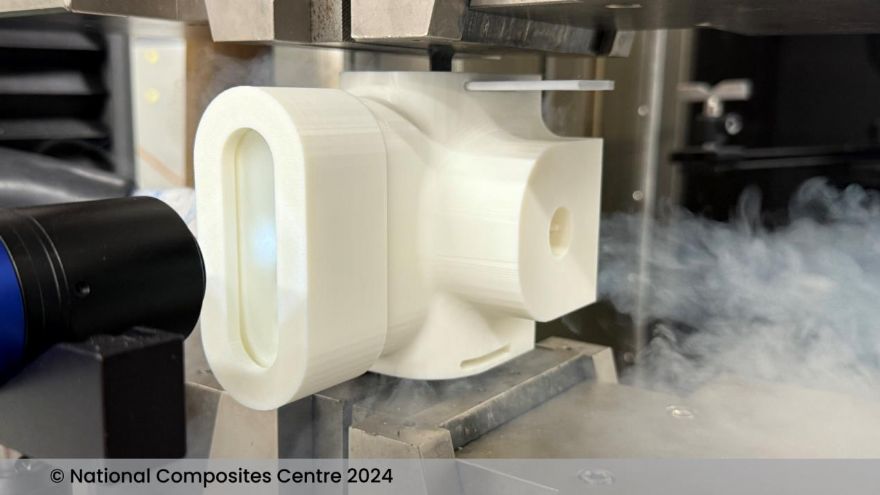
The
National Composites Centre (NCC) has further demonstrated the use of its novel cryostat to screen a wide selection of materials at cryogenic temperatures. The low-cost process highlights the best candidates for detailed material testing using conventional methods. Multiple cryostats have been developed and released such as microcrack fracture toughness and shear fixtures, with others, including impact, under development.
Understanding properties of materials at cryogenic temperatures is time-consuming and costly, with limited existing capability in the UK. Driving transformational change in the field of cryogenics, the capability introduced by the NCC will reduce the time, cost and complexity of cryogenic testing.
The 3-D printed cryostat that has been developed provides the capability to rapidly screen cryogenic material properties, while providing insight into failure mechanisms. A video of the material test in action can be viewed below which shows the forming of microcracks in a thermoset sample under tension at approximately –160°C. The cryostat shown is an early iteration that has since been updated.
Allowing material specimens to be viewed live during the test process to identify ‘microcracking’ is achieved via optical access, a key feature of the device. The test has a cycle time of under 1hr to cool and test, allowing a high throughput of test specimens. This is achieved by using cryogenically cooled nitrogen gas, using a design with a low thermal mass and volume. By utilising a tensile testing machine, no modifications to existing test machines are required.
Matt Kay, principal engineer at the NCC, said: “The cryostat concept allows the rate of cryogenic materials testing to significantly increase, helping engineers and researchers to learn quickly and cost effectively, reducing the burden in developing new products for the emerging liquid hydrogen industry.”